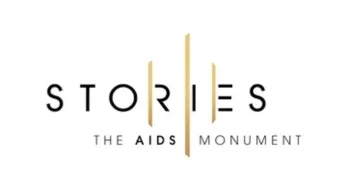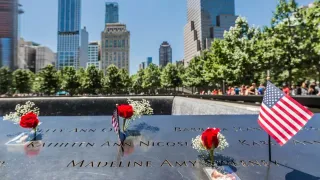
4 hours ago
‘STORIES: The AIDS Monument’ to Open in West Hollywood in November
READ TIME: 3 MIN.
On November 16, the heart of West Hollywood will witness the unveiling of STORIES: The AIDS Monument, a landmark installation dedicated to honoring the countless lives touched by the HIV/AIDS epidemic, including those lost, survivors, activists, caregivers, and the broader LGBTQ+ community. This long-anticipated project is envisioned as a space for reflection, education, and community healing .
The monument is the result of a years-long partnership between the City of West Hollywood and the Foundation for the AIDS Monument (FAM), each committed to preserving the stories of struggle, advocacy, and hope that have defined the fight against HIV/AIDS. Renowned artist Daniel Tobin designed the monument, which features a public plaza, a donor wall, vertical bronze “traces” engraved with narrative text, and integrated lighting reminiscent of the candlelight vigils that have long symbolized the community’s solidarity and mourning .
The installation’s podium faces N. San Vicente Boulevard, inviting passersby and visitors to engage directly with the stories embedded in the structure. The monument not only memorializes the past but also functions as an iconic piece of public art, aiming to spark conversations about HIV/AIDS, stigma, and collective memory for generations to come .
At the core of STORIES: The AIDS Monument is the recognition that behind every statistic are individuals whose experiences have shaped the narrative of HIV/AIDS. The monument honors trailblazers like Connie Norman, a self-described “AIDS diva” and transgender activist whose public policy work and activism left a profound legacy in Southern California. Norman’s ashes were famously scattered on the White House lawn as part of ACT UP’s 1996 “Ashes Action,” a testament to her enduring fight against stigma and for the rights of people living with HIV/AIDS .
The monument also commemorates Essex Hemphill, a gay African-American poet and activist whose creative genius and unflinching advocacy gave voice to marginalized communities and inspired a new generation of LGBTQ+ leaders. In his poetry, Hemphill urged remembrance and resilience: “Don’t forget to tell how much we honored life. Don’t forget to tell how hard many of us fought for it. Life is and has always been precious to us and our community’s response to this plague proves it… Remember our heroes and heroines” .
The monument’s opening comes at a time when the history and ongoing impact of HIV/AIDS remain deeply relevant. While medical advances have transformed the prognosis for many living with HIV, the epidemic’s legacy continues to affect LGBTQ+ people, communities of color, and other marginalized groups across the United States and worldwide. By offering a physical space for public mourning, storytelling, and education, the monument seeks to dismantle stigma and foster dialogue about the continuing challenges of HIV/AIDS .
Through its educational mission, STORIES: The AIDS Monument aspires to reach young people who may not have lived through the epidemic’s darkest years. By illuminating personal testimonies and community activism, the monument becomes a living classroom—reminding visitors of the cost of silence, the necessity of compassion, and the power of collective action.
The opening ceremony on November 16 is expected to draw survivors, activists, local officials, and community members, many of whom have been personally impacted by HIV/AIDS. The event will feature speeches, performances, and opportunities for reflection as participants honor those lost and reaffirm their commitment to ending HIV-related stigma and discrimination .
The Foundation for the AIDS Monument plans ongoing programming at the site, including storytelling events, educational workshops, and collaborations with local schools and LGBTQ+ organizations. These activities are designed to ensure that the monument remains a vibrant center for community engagement, advocacy, and remembrance .
STORIES: The AIDS Monument stands as a testament not only to loss but also to the resilience and activism that have defined the LGBTQ+ community’s response to HIV/AIDS. The project is made possible through the generous support of grant funding from the California Natural Resources Agency and the Los Angeles County Regional Park and Open Space District, further underscoring the importance of public investment in memorializing this chapter of American history .
By elevating the voices of those most affected and educating the broader public, the monument fulfills its promise to honor the past, support the present, and inspire hope for a future free from HIV/AIDS.
STORIES: The AIDS Monument not only memorializes history but also invites every visitor to become a steward of that history, ensuring that the lessons, courage, and compassion of the past continue to inform future generations .
For more information about the monument, its mission, and related events, visit the official project website at go.weho.org/aidsmonument .






